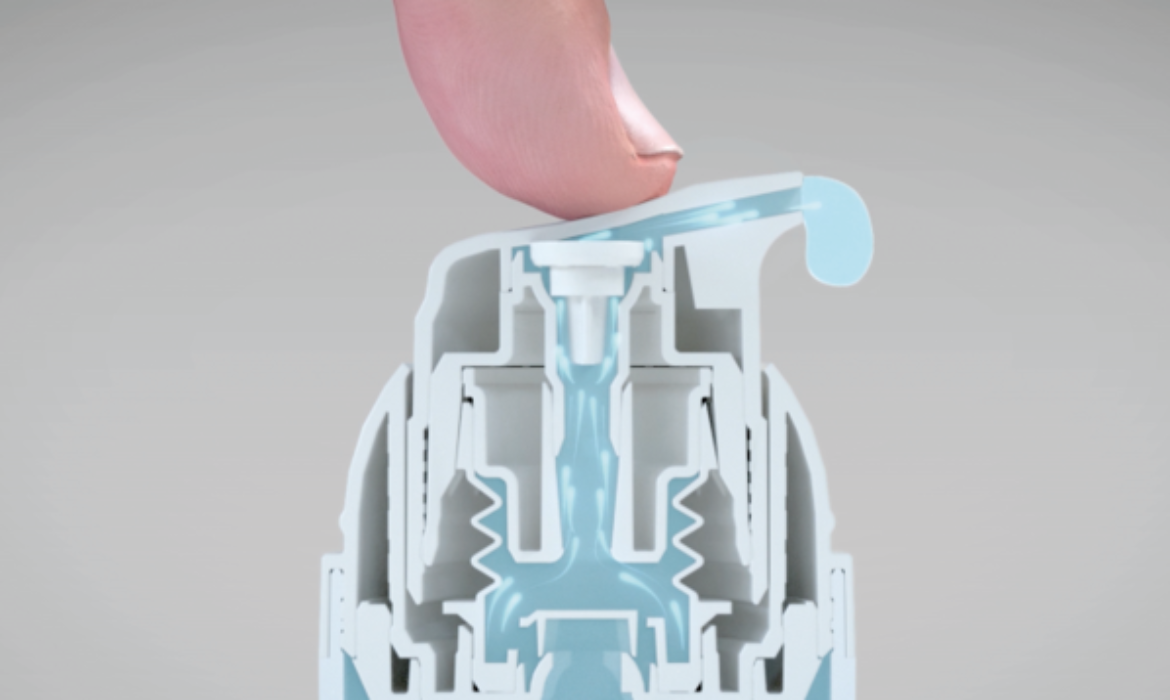
Use of airless dispensing systems has increases in the personal and health care, pharmaceutical, and cosmetic industries. These innovative plastics make it easy to use the product, extend its shelf life, and protect food.
- The Fundamental Design of Airless Dispensing Equipment
Generally, airless dispensing machines consist of three primary parts:
Container: This holds the product and is often constructed from materials that shield the formulation from deterioration by light and air
Pump Mechanism: An innovative pump design that evenly distributes the product without adding air.
Actuator: The component that the user pushes or presses to let go of the item.
-
How They Operate
Mechanism of Vacuum
A vacuum mechanism is used by airless dispensing systems to dispense the product. This is how it operates:
Sealed Environment: After the product is poured, air cannot enter the container because it is made to be airtight. Pollution and oxidation are reduced in this setting.
Pushing Mechanism: The pump mechanism presses down on a piston or diaphragm within the container when the actuator is pressed. The product is drawn upward through a small tube and towards the actuator by the vacuum created by this motion.
Controlled Dispensing: The product is dispensed in a controlled way that permits accurate application without waste as long as the user keeps pressing the actuator.
Avoiding Air Exposure
The product is never exposed to air, so there is a far lower chance of contamination. This is particularly crucial for formulations that are delicate, including those that contain active chemicals that can break down.
-
Sorts of Airless Infusion Equipment
There are several varieties of airless dispensing devices, each designed for a specific use case:
Bottles: Used frequently for serums, lotions, and creams.
Pumps: Made for liquid goods like gels or makeup in a fluid form.
Jars: Frequently utilised for heavier goods like rich creams or balms.
-
Benefits of Airless Infusion Equipment
-
Integrity of the Product
Airless dispensing device help maintain the effectiveness of active compounds by preventing air exposure, guaranteeing that customers receive the product as intended.
-
Safety and Hygiene
Since users do not need to touch the product inside the container, these devices reduce the possibility of contamination. Bacteria and other pollutants are kept at bay by the sealed environment.
-
Accuracy and Management
It is possible to precisely control the amount with airless dispensing.
-
Longer Shelf Life
With reduced oxidation and contamination, items in airless dispensing devices often have a longer shelf life compared to standard containers.
-
Utilisation in Diverse Sectors
Airless dispensing equipment is frequently utilised in:
Cosmetics: For lotions, serums, and creams when the stability of the ingredients is essential.
Pharmaceuticals: To administer delicate drugs that need to be shielded from light and air.
Skincare: In items like anti-aging formulas that are intended to have long-term effectiveness.
In summary
Dispensing machines without air are a major development in packaging technology, providing a host of advantages that improve user experience and product performance. These devices are favoured in a variety of industries because they assist preserve the integrity and efficacy of sensitive formulations by limiting air exposure and contamination. As long as customers continue to expect quality and safety, as it develops, airless dispensing technology is probably going to be used in product packaging even more.



